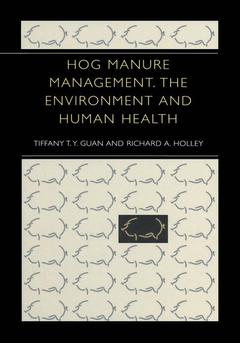This volume provides a current look at how development of intensive live stock production, particularly hogs, has affected human health with respect to zoonotic diseases primarily transmitted by food but also by water, air and oc cupational activity. While information presented focuses on the development of increasing livestock production in Canada, examples are given and compar isons are made with other countries (Denmark, Taiwan, the Netherlands and the United States) where the levels of livestock production are much more intense and where the industry is more mature. Canada is also searching for solutions to enable handling the growing volume of its livestock waste properly. Lessons learned from the experience of those who have gone before are invaluable and are drawn together in this volume to serve as useful guidance for others in plot ting the courses of action possible to avoid serious environmental setbacks and negative human health effects through foodborne illness. A significant portion of the text is devoted to a discussion of enteric illness in humans caused by zoonotic pathogens. The second chapter deals with sur vival of pathogens (which cause foodborne illness) in manure environments. An evaluation of the human health hazard likely to occur from the use of ma nure as fertilizer is important because of the recent trend toward an increase in foodborne illness from the consumption of minimally processed fruits and vegetables that may have been fertilized with animal-derived organic materials.




